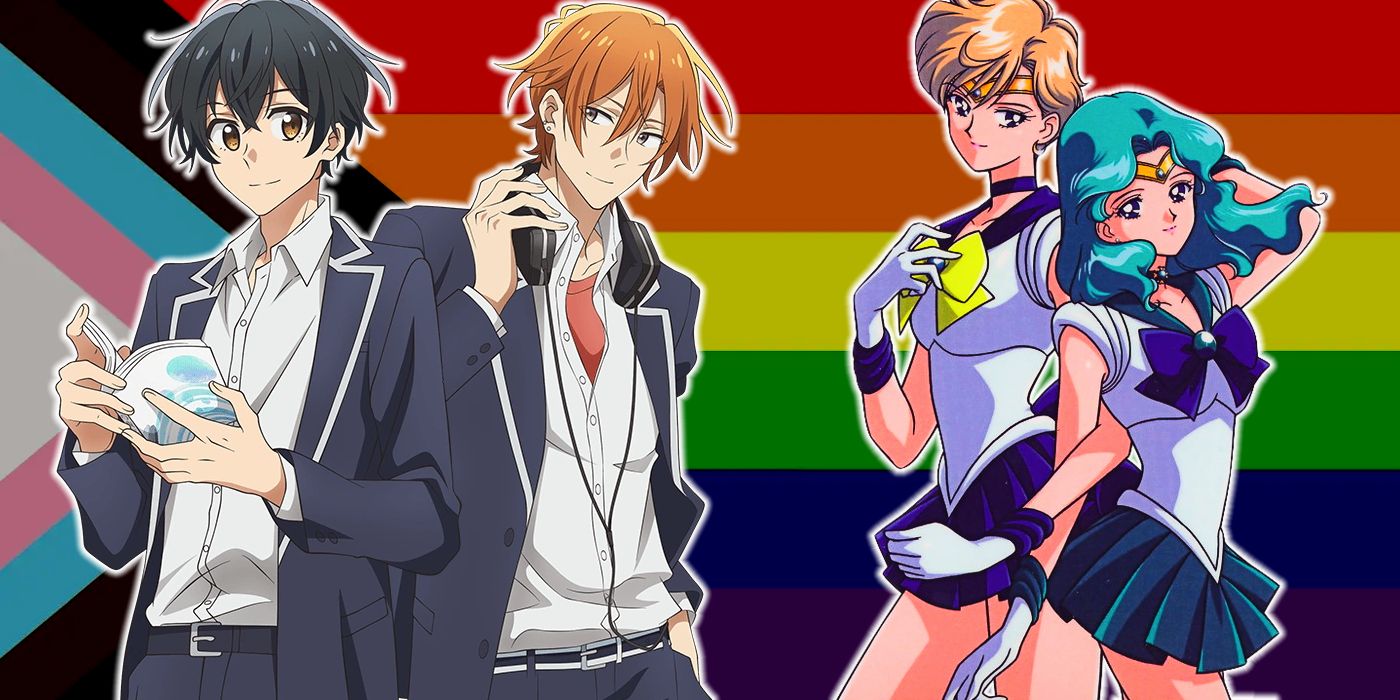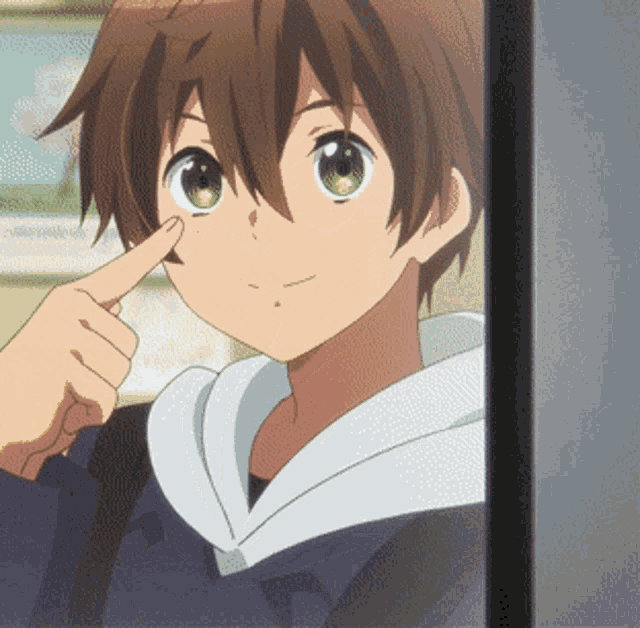The Influence of Anime on Young Minds: Examining Impacts on Identity and Mental Health

Introduction
Media, including film, animation, and specifically anime, exerts a significant influence on the impressionable minds of young people. Through diverse character portrayals, anime shapes societal norms and perceptions of self and others, presenting both positive and negative potential.
On the positive side, anime frequently challenges restrictive binary gender norms, exploring themes of gender fluidity and inclusivity. This can empower young people to feel more accepted and understood, contributing to the breakdown of harmful societal stigmas. Additionally, anime often delves into complex emotional struggles and mental health challenges, potentially opening important conversations for young viewers and facilitating empathy.
However, concerns arise regarding the portrayal of unrealistic body ideals in anime. Exaggerated body proportions and idealized features can contribute to body dissatisfaction and low self-esteem among young viewers, particularly during their formative years. Moreover, excessive anime consumption can potentially lead to social isolation and escapism, further impacting mental well-being.
This blog delves deeper into the growing popularity of anime and its multifaceted impact on young people's mental health and self-perception. We will look more closely both the positive potential and potential drawbacks, aiming to provide a nuanced understanding of this influential medium's role in shaping young minds.
Anime and Eating Disorders: Exploring the Potential Link and Positive Steps Forward
Anime, the captivating animation style born in Japan, has gained immense popularity among young people worldwide. However, concerns have emerged regarding its potential connection to the rise in eating disorders among young people in several Asian countries. This complex issue necessitates careful analysis and proactive solutions.
Understanding Eating Disorders:
Eating disorders are severe mental health conditions marked by unhealthy eating patterns and distorted body image perception. They can have devastating consequences for physical health, mental well-being, and social relationships. Symptoms can manifest in various ways, from using food as a coping mechanism to obsessive calorie counting and fear of gaining weight.
The Influence of Media Portrayals:
Research suggests that media portrayals of unrealistic body ideals play a significant role in the development of eating disorders. These ideals, often unattainable and disproportionate, can damage self-esteem and self-acceptance, leading to unhealthy comparisons and unrealistic expectations.
Anime's Body Image Representation:
Many anime series feature characters with exaggerated features, including large heads and disproportionately small waists and limbs. This lack of body diversity and prevalence of slender, youthful characters creates a narrow and potentially harmful portrayal of beauty and normalcy.
Potential Risks for Young Viewers:
Young viewers, particularly during their formative years, are susceptible to internalizing these idealized body images as desirable or even attainable. This comparison can fuel body dissatisfaction, low self-esteem, and unhealthy weight control behaviors.
Promoting Body Positivity and Critical Media Consumption:
Addressing this issue requires multifaceted solutions. Anime creators can play a crucial role by incorporating more diverse and realistic body shapes into their narratives, promoting messages of body positivity and acceptance.
Simultaneously, media literacy education can equip young viewers with the critical thinking skills needed to analyze media portrayals and deconstruct unrealistic beauty standards. This empowers them to develop a healthy relationship with their bodies and challenge harmful messages.
Ultimately, young people should have the agency to choose the media they consume. Actively seeking out media that fosters positive self-image and celebrates diverse body types can significantly counter the potential negative influences of media presenting unrealistic standards.
Embracing a Holistic Approach:
Addressing the potential link between anime and eating disorders demands a collaborative effort. Creators, educators, mental health professionals, and parents all have roles to play in promoting healthy body image development and supporting young people struggling with eating disorders.
By fostering diversity, critical media consumption, and body positivity, we can work together to create a healthier media landscape and support young people in cultivating positive self-perception and acceptance.
Additional Resources:
- National Eating Disorders Association: https://www.nationaleatingdisorders.org/
- The Jed Foundation: https://jedfoundation.org/
- MentalHealth.gov: https://www.samhsa.gov/mental-health
Visuals:
- Include diverse images of real people with different body shapes and sizes alongside anime characters to highlight the contrast in body representation.
- Use infographics or charts to illustrate statistics on eating disorders and media influence.
Remember, the focus should be on providing informative and helpful content while remaining sensitive to the potential triggers associated with eating disorders.
Defining Identities: Anime and the Quest for Belonging
Adolescence as a Time of Exploration: Imagine stepping into a vibrant kaleidoscope, each shard reflecting a different aspect of who you are. That's what adolescence feels like for many – a swirling exploration of identities, from gender and sexuality to passions and beliefs. It's a time of questioning, challenging norms, and carving out a unique space in the world. The Shadow of 'Otherness': But amidst this exploration, there often lurks a dark figure: the concept of the "other." This shadow cast by dominant cultures and norms labels certain identities and expressions as different, often leading to stigma and exclusion. For young people navigating their own sense of self, this can be incredibly damaging, forcing them to hide their true colors or face isolation.
Breaking Free from the Mold: Fortunately, the fight against these rigid categories isn't a solitary one. Art, in its many forms, becomes a powerful tool for dismantling the walls of "otherness." And in the realm of artistic expression, animation takes center stage.  Anime: A Canvas for Challenging Norms: Unlike many Western narratives, anime often embraces ambiguity and fluidity when it comes to identity. Characters defy easy categorization, their gender expressions and ethnicities existing on a spectrum rather than fitting neatly into predefined boxes. This deliberate blurring of lines challenges viewers to question their own preconceived notions of what's "normal" and celebrate the beauty of diversity.
Anime: A Canvas for Challenging Norms: Unlike many Western narratives, anime often embraces ambiguity and fluidity when it comes to identity. Characters defy easy categorization, their gender expressions and ethnicities existing on a spectrum rather than fitting neatly into predefined boxes. This deliberate blurring of lines challenges viewers to question their own preconceived notions of what's "normal" and celebrate the beauty of diversity.
A World of Acceptance: Imagine a world where anime's vibrant tapestry extends beyond the screen, weaving itself into the fabric of society. A world where young people can explore their identities without fear of judgment, where differences are embraced as strengths, and where everyone feels empowered to be their authentic selves. This is the future that anime, with its subversive narratives and boundless creativity, helps us envision. Remember, the journey towards self-acceptance is as unique as each individual. Embrace the kaleidoscope within you, and let your true colors shine.
Anime: A Double-Edged Sword for Young Minds
Anime, the vibrant world of fantastical animation, isn't just a passion for many young people in Japan; it's a community, a refuge, and sometimes, a target. This subculture offers a double-edged sword for its members, impacting their mental health in complex ways.
Finding Comfort and Connection: On the one hand, anime provides a haven for young people to find their tribe. Fans gather around shared interests, forming deep bonds and finding solace in understanding each other's passion. It fosters a sense of belonging and acceptance, something crucial during the tumultuous years of adolescence. Facing Stigma and Struggles: But this haven isn't immune to the harsh realities of the outside world. Anime culture can be heavily stigmatized by mainstream youth, facing ridicule and unfair judgment. This stigma, unfortunately, translates into mental health consequences. Studies, like Liu Y.'s 2022 research, suggest that young people identifying as anime fans are more prone to experiencing depression, anxiety, eating disorders, and even suicidal thoughts.
Facing Stigma and Struggles: But this haven isn't immune to the harsh realities of the outside world. Anime culture can be heavily stigmatized by mainstream youth, facing ridicule and unfair judgment. This stigma, unfortunately, translates into mental health consequences. Studies, like Liu Y.'s 2022 research, suggest that young people identifying as anime fans are more prone to experiencing depression, anxiety, eating disorders, and even suicidal thoughts.
The Reputation Trap: Why this disparity? The research points towards the "reputation trap." Subcultures with higher social standing seem to shield their members from mental health struggles, while those facing stigma, like anime, do not. This creates a vicious cycle: stigma leads to mental health issues, making the subculture appear "troubled," reinforcing the initial stigma.
Breaking the Cycle: The way out of this loop lies in challenging harmful stereotypes and embracing diversity. We need to create spaces where young people can explore their passions, identities, and expressions freely, without fear of judgment. This, in turn, will improve the overall reputation of subcultures like anime, creating a safer and more supportive environment for all.
Anime, with its power to transport us to fantastical worlds and connect us through shared experiences, can be a valuable asset for young minds. By acknowledging its complexities and addressing the challenges it faces, we can unlock its full potential as a force for good, fostering creativity, belonging, and ultimately, positive mental health for all.
Every subculture, every passion, every expression deserves respect and understanding. Let's break the cycle of stigma and create a world where everyone can be their authentic selves, embraced for who they truly are.
I wanted to briefly talk about the effects of anime on people. I hope you like.See you in my next blog posts.























































